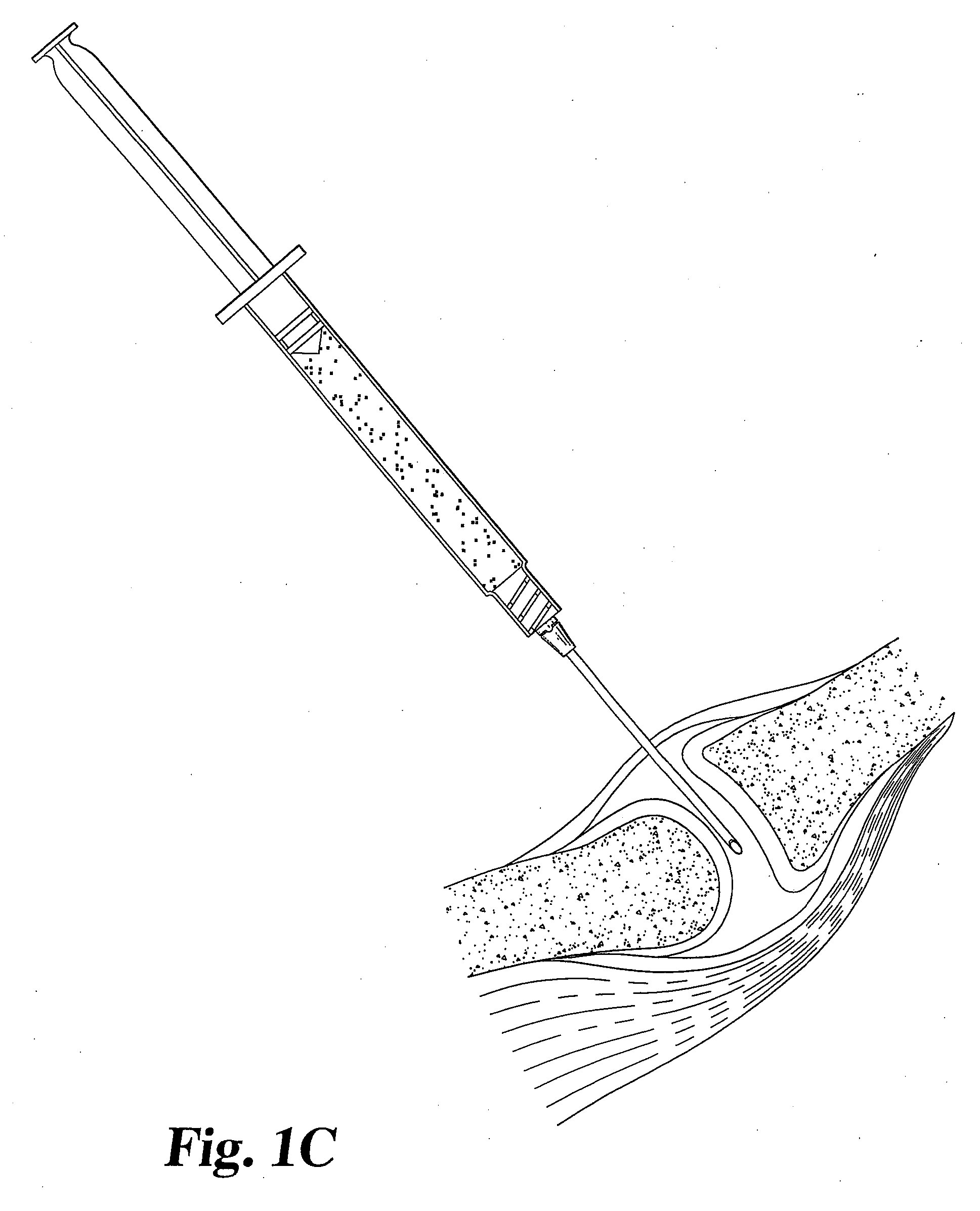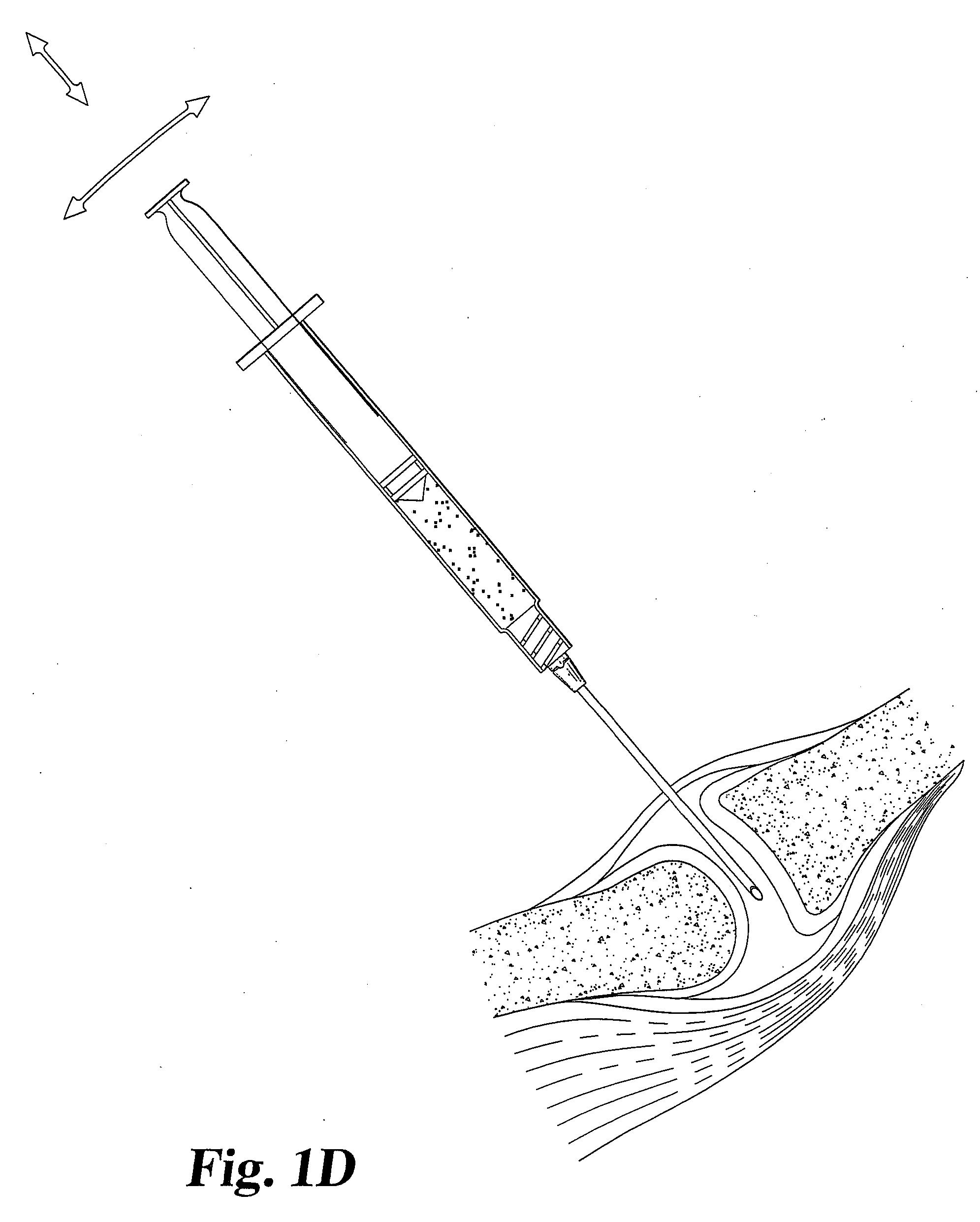Collagen-based materials and methods for treating synovial joints
a technology of collagen-based materials and synovial joints, applied in the direction of drug compositions, antibacterial agents, peptide/protein ingredients, etc., can solve the problems of limited repair capacity, reduced capacity to protect and cushion bone ends, and degeneration of articular cartilage, so as to promote collagen crosslinking and enhance imaging of injected materials
- Summary
- Abstract
- Description
- Claims
- Application Information
AI Technical Summary
Benefits of technology
Problems solved by technology
Method used
Image
Examples
example 1
[0042] A gel or suspension of hydrated particulate or fibrous (autologous or allogenic) fascia lata in a biocompatible medium such as water, saline, or ethylene glycol is used to supplement the cartilage of a facet joint. The particle size can be in the range from 0.01 mm to 5 mm, preferably between 0.05 and 0.25 mm. The suspension is injected directly into the articular facet joint space through an intact joint capsule using a hypodermic needle. The suspension is contained within the joint capsule following injection. The medium subsequently diffuses out of the disc space and leaves the hydrated fascia lata material behind. A single injection is effective for improving the facet joint structure, although additional injections may be necessary to achieve appropriate level of treatment.
example 2
[0043] A gel or suspension of hydrated particulate or fibrous allogenic annulus fibrosis in a biocompatible medium such as water, saline or ethylene glycol is used to supplement the cartilage of a facet joint. The particle size can be in the range from 0.01 mm to 5 mm, preferably between 0.05 and 0.25 mm. The suspension is injected directly into the articular facet joint space through an intact joint capsule using a hypodermic needle. The suspension is contained within the joint capsule following injection. The medium subsequently diffuses out of the disc space and leaves the hydrated annulus fibrosis material behind. Single injection is desirable; however, additional injections may be necessary to achieve the appropriate level of treatment.
example 3
[0044] Dehydrated annulus fibrosis material in granule, particulate or power form is used to supplement the cartilage of a facet joint. The particle size can range between 0.01 mm and 5 mm, preferably between 0.05 to 0.25 mm. The material is loaded in its dehydrated state into a specially designed syringe for delivery of particulate matter. The material is extruded into the articular facet joint space through a small, dilated capsule opening. The material remains inside the articulating facet joint space after the needle is removed. It subsequently absorbs moisture or body fluids and swells up in vivo.
PUM
| Property | Measurement | Unit |
|---|---|---|
| Size | aaaaa | aaaaa |
| Size | aaaaa | aaaaa |
| Size | aaaaa | aaaaa |
Abstract
Description
Claims
Application Information
 Login to View More
Login to View More - R&D
- Intellectual Property
- Life Sciences
- Materials
- Tech Scout
- Unparalleled Data Quality
- Higher Quality Content
- 60% Fewer Hallucinations
Browse by: Latest US Patents, China's latest patents, Technical Efficacy Thesaurus, Application Domain, Technology Topic, Popular Technical Reports.
© 2025 PatSnap. All rights reserved.Legal|Privacy policy|Modern Slavery Act Transparency Statement|Sitemap|About US| Contact US: help@patsnap.com



